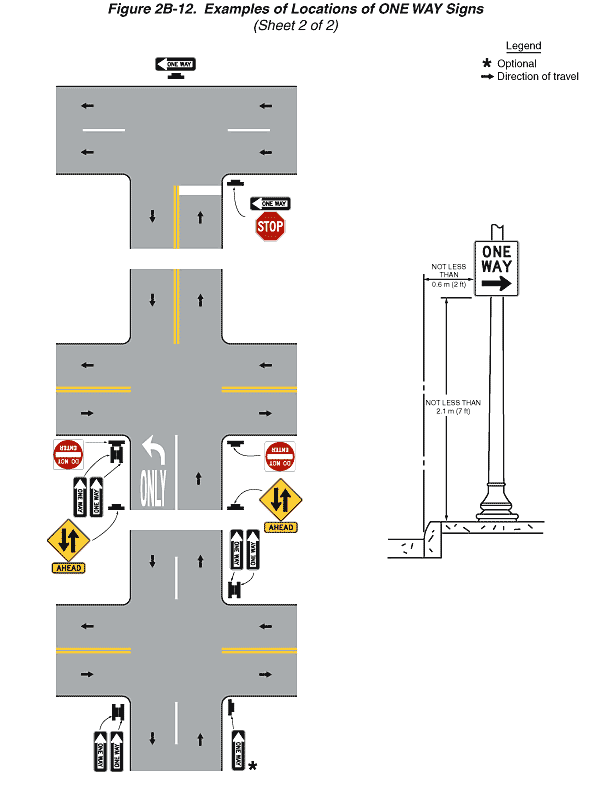
Figure 2B-12. Examples of Locations of ONE WAY Signs (Sheet 2 of 2)
Sheet 2 of this figure shows four examples of locations of One Way signs. Black inverted "Ts" denote signs. A legend shows an asterisk indicating optional use and a black arrow indicating the direction of travel in the lanes.
The first illustration shows a T-shaped intersection of a vertical two-lane roadway with a horizontal two-lane roadway. Black arrows on the vertical roadway indicate that the direction of travel is one lane in each direction, and a solid double yellow line is shown separating the opposing direction lanes, except through the intersection. A solid white stop line extends across the approach lane in advance of the intersection. Black arrows on the horizontal roadway indicate that the direction of travel is one way east to west. A broken white line separates the two lanes of the horizontal roadway. To the right of the northbound travel lane in advance of the intersection with the horizontal roadway, a sign assembly is shown. It is shown as a One Way sign pointing west (to the left) above a Stop sign. These signs are shown facing south. On the far side of the intersection directly opposite the vertical roadway, another One Way sign pointing west (to the left) is shown to the outside of the horizontal roadway. This sign is shown facing south.
The second illustration shows an intersection of a vertical two-lane roadway with a horizontal two-lane roadway. Black arrows on the horizontal roadway indicate that the direction of travel is one lane in each direction, and a solid double yellow line is shown separating the opposing direction lanes, except through the intersection. Black arrows on the vertical roadway indicate that the direction of travel for both lanes is south to north in advance of the intersection and that on the far side of the intersection, the direction of travel is one lane in each direction. In advance of the intersection, a solid white line is shown separating the two northbound lanes, and in the left lane, the pavement is shown marked with a vertical white arrow curving up and to the left over the word "ONLY" in white. At the bottom of the illustration to both the left and right of the vertical roadway, a sign assembly is shown. It is shown as a Two-Way Traffic symbol sign above a horizontal orange plaque with the word "AHEAD" in black and is facing south. To the right of the right lane in advance of the intersection, a Do Not enter sign is shown facing north. To the left of the left lane in advance of the intersection, a sign assembly is shown. It is shown as two One Way signs mounted back-to-back, one pointing north (to the right) and facing east and the other pointing north (to the left) and facing west. A Do Not Enter sign is shown mounted perpendicular to these signs facing north.
The third illustration shows an intersection of a vertical two-lane roadway with a horizontal two-lane roadway. Black arrows on the horizontal roadway indicate that the direction of travel is one lane in each direction, and a solid double yellow line is shown separating the opposing direction lanes, except through the intersection. On the vertical roadway, black arrows indicate that the direction of travel for both lanes is south to north. A broken white line separates the two northbound lanes, except through the intersection. To the right of the right lane in advance of the intersection, a One Way sign pointing north (to the left) is shown facing west. An asterisk is shown to the right of this sign. To the left of the left lane in advance of the intersection, two One Way signs are shown mounted back-to-back. One is shown pointing north (to the right) and facing east, and the other is shown pointing north (to the left) and facing west. To the right of the right lane on the far side of the intersection, two One Way signs are shown mounted back-to-back. One is shown pointing north (to the left) and facing west, and the other is shown pointing north (to the right) and facing east.
The fourth illustration shows an example of the height and lateral location of a One Way sign. It shows a vertical rectangular white One Way sign mounted on a pole on raised curbing to the right of a roadway. The distance from the edge of the roadway to the near edge of the sign is shown as a dimension not less than 0.6 m (2 ft). The distance from the bottom edge of the sign to the level of the edge of the travel lane at the top of the curbing is shown as a dimension not less than 2.1 m (7 ft).
Back to: Sheet 1
